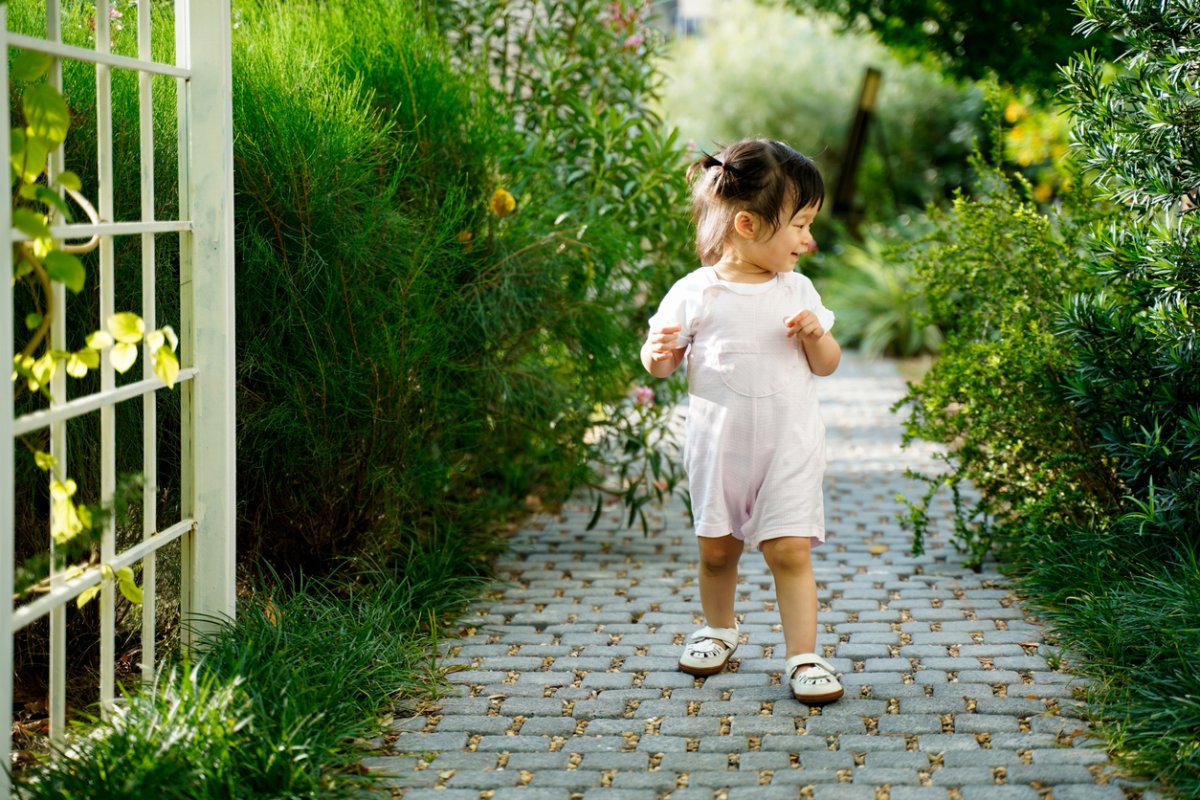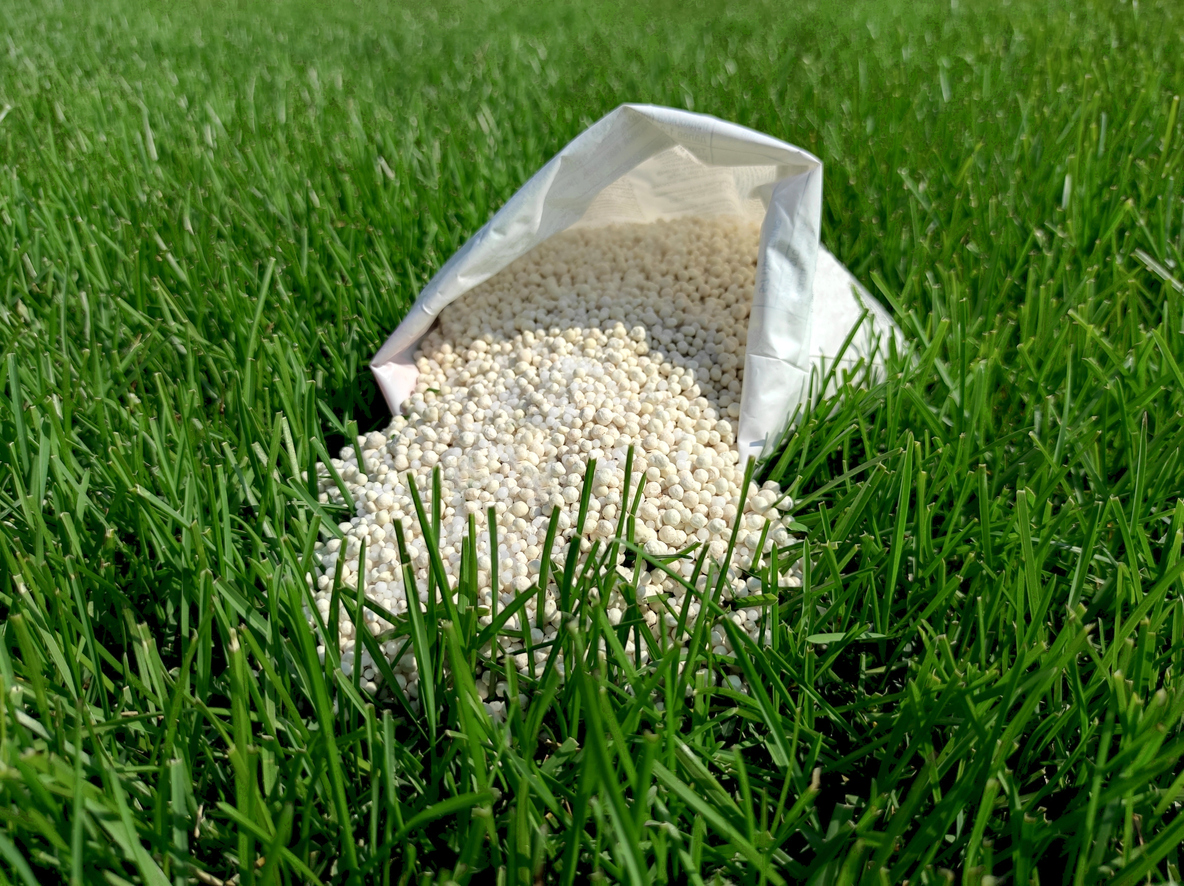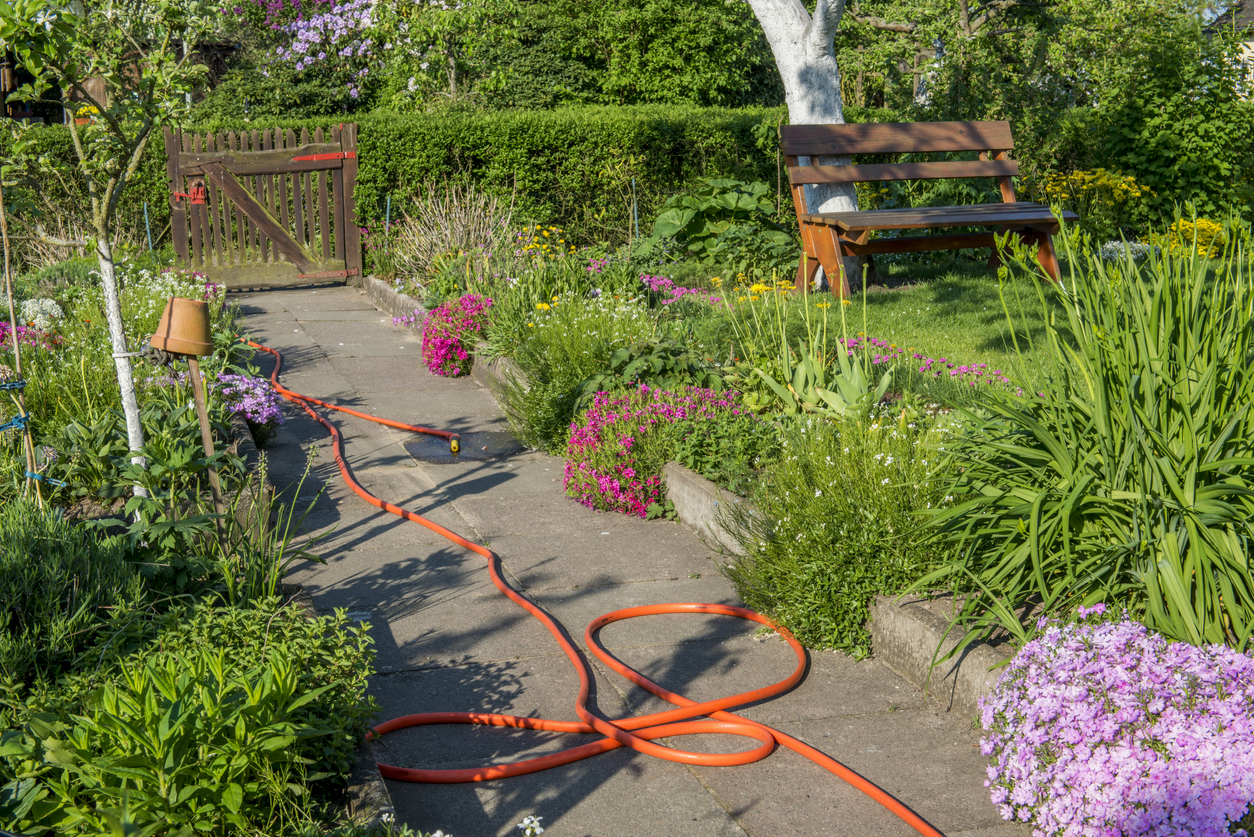

We may earn revenue from the products available on this page and participate in affiliate programs. Learn More ›
Your backyard and garden are amazing spaces where your kids can get exercise, breathe fresh air, and learn about nature. But child safety hazards can lurk in the most innocent-looking landscapes, and accidents can happen in the blink of an eye. Read on to learn how to safeguard your little loved ones from outdoor dangers so that you can relax a bit while they romp and explore.
1. Designate a Play Area

Parents can avoid many of the dangers below by creating a specific spot where youngsters can hang out relatively risk-free. The size will depend on how big your yard is and how many tots regularly gather there. Locate the fun zone within your direct line of vision—without obstructions—from where you’ll typically be when letting kids play.
Activities abound, but with preschool-age kiddos it’s tough to beat a sandbox, whether you build your own or purchase one. Our researched guide to quality sandboxes found the best interactive canopied model to be this pirate-themed KidKraft set.
RELATED: Childproofing Checklist
2. Practice Fire Pit Safety

It’s a warming trend: Fire pits have become increasingly popular in backyards across the country. Sadly, emergency room visits caused by fire pits have risen alarmingly according to the U.S. Consumer Products Safety Commission, and a quarter of these accidents occur among children under the age of 5. To minimize risk around the fire pit, burn dry hardwoods like ash, hickory, and oak, which are less likely to spark and smoke—and always shield flames with a spark screen.
When using a wood-burning model, be sure to fully douse embers, since many burn injuries can occur even a day after a fire. Spread remains as thinly as possible and saturate all coals, ash, and unburnt logs with the wide spray nozzle on your garden hose. Alternatively, you can invest in a safer, cleaner-burning gas fire pit, such as this Endless Summer model, the top-ranked product in our best gas-powered fire pits guide.
3. Deter Dangerous Insects

Many curious tykes go through a “bug phase,” which can be terrific for their education and development. However, stinging insects like wasps and hornets should not be a part of the experience. One effective measure is to clean up immediately after snack time so wasps aren’t attracted to any leftovers. To keep these predatory pests from building nests where your children play, plant natural repellents, such as spearmint, eucalyptus, citronella, and nasturtiums.
You can also try tricking would-be stingers with subterfuge by hanging fake wasp nests in trees where your children seek shade, as some believe they ward off the territorial bugs. You can use lookalike wasp nest decoys, or make your own out of brown paper bags stuffed with scrap paper.
RELATED: Childproofing Checklist
4. Get Real With Artificial Grass

Artificial grass has come a long way to look and feel like the real thing. Since it was originally developed for pro sports, it can no doubt stand up to heavy-duty toddler traffic. However, do your research to ensure you purchase quality, nontoxic turf. Also, bear in mind that even the best turf tends to get very hot in direct sun, so a shaded area where kids can picnic or relax is essential for artificial grass yards.
5. Watch the Water

According to the CDC, drowning is the second-most common cause of death for children ages 1 through 4, and non-fatal drowning can still cause long-term health problems. It’s not just backyard pools that are danger zones, however. Hot tubs, fish ponds, fountains, and birdbaths should all be considered drowning hazards. Even a garden hose can be risky for unattended toddlers.
Barriers and fencing around these water features can be the difference between fun and tragedy. The CDC found that a three-sided isolation fence separating a pool area from the home and yard reduces a child’s risk of drowning by 83 percent. That said, there is no substitute for proper supervision of little ones when around water.
RELATED: Childproofing Checklist
6. Plant Prudently

Various popular plants are toxic to humans, and they can cause problems that range from pesky to life-threatening. Favorites like philodendron and daffodils can cause mouth, throat, and skin irritation, as well as stomach upsets if ingested, while foxglove, oleander, and azalea are powerful poisons (check out this more complete list of poisonous and non-poisonous plants for further information).
Thorny and spiky plants can also cause their share of ouchies. Scary species should be skipped in favor of those that are safe, but the latter group isn’t any less interesting to cultivate. Sunflowers grow tall, daisies and cosmos are easygoing, and nasturtiums are even edible!
7. Store Garden Chemicals Safely

Many chemicals commonly used to keep a garden healthy are harmful if ingested by humans and animals. Unfortunately, pesticides, fertilizers, and gas and oil for mowers don’t often come in childproof containers, so the EPA urges keeping these products in a locked cabinet, away from food, and, ideally, in a ventilated shed. Always keep these supplies in their original containers with labels and directions to avoid mistaking them for something else or applying them improperly.
8. Remove Tripping Hazards

Skinned knees are part of growing up, but hard falls are no fun. Inspect your landscape for accidents waiting to happen, and address or repair potential culprits immediately. Always keep garden hoses coiled and elevated rather than lying on the lawn. Likewise stow away all rakes, hoes, and other garden tools so they won’t be obstacles in a game of tag.
Wooden decking can rot, and cracks in stone and cement patios and walkways aren’t uncommon. Stave off problems by treating these surfaces with the correct type of sealer; for decks, we recommend Seal-Once Marine Premium Wood Sealer, the top pick in our best deck sealers guide.
9. Secure Swing Sets

While not common, children can be seriously injured or killed while using play equipment. In particular, swing sets—with their weight and size, ropes or chains, and high potential for falls—are a piece of equipment to be especially watchful around. For safety’s sake, ensure that any swing set you provide meets the standards of ASTM International (formerly known as the American Society for Testing and Materials) and is suitable for your child’s size and weight.
Soft materials like rubber and canvas are crucial, as is a soft landing area, such as wood chips or interlocking playground tiles. Follow instructions to the letter when installing play sets, inspect them often for signs of wear and loose connections, and always keep an eye on tots when they’re on swings, slides, and seesaws.
10. Trim the Trees

Over time, seasonal weather changes can severely weaken the limbs of trees that otherwise appear perfectly healthy. This means that a heavy branch could break off and drop without warning, causing serious harm to anyone below. Only DIYers experienced with chainsaw operation should tackle this heavy-duty trimming chore. Since it can be hard to tell which limbs are likely to break, you may wish to hire a pro to keep trees in safe shape.
11. Take Care With Tools

Adults working outdoors alongside kids should be extra conscientious about the use of grown-up gardening gear. Inspect all garden tools before use, and avoid using anything with a broken handle, dull blade, or other damage. Forbid younger children from touching tools, and instruct older ones on correct tool usage, reminding them that they are not toys. When you’re done gardening, clean and stow tools safely away.
Luckily, giving children a love of gardening can still be started early, and there are numerous tools for tykes to get them started. Our researched guide to garden sets for kids, which named the Born Toys set as “Best Overall,” is a great place to start.
12. Discourage Dirty Dining

Mud pies might be fun to make, but snacking on them is not a good idea! Research into geophagy, or the natural instinct to eat dirt, has produced conflicting findings, and any possible benefits are outweighed by possible health risks like parasite contraction, heavy metal poisoning, and gastrointestinal issues. Even though kids may be excited to nibble a carrot pulled straight from the ground, just say no. Also, make a rule to wash homegrown produce well before mealtime. And those mud pies? They’re to be consumed by imaginary friends only!
13. Think Like a Kid

All the common-sense advice above can help keep youngsters safe as they frolic in the garden and backyard. Beyond these tips, however, caretakers should try to think the way their child might to potentially prevent other kinds of accidents. For example, a kid may consider a gate or clothesline ideal for swinging on or imagine a metal tomato cage to be a cool piece of armor—without thinking about pinched fingers or poked eyes. There’s no need to be a helicopter parent, but keep in mind that when kids are playing, the fun potential of an activity can cloud their developing judgment skills.
